Family : Platycephalidae

Text © Giuseppe Mazza

English translation by Mario Beltramini
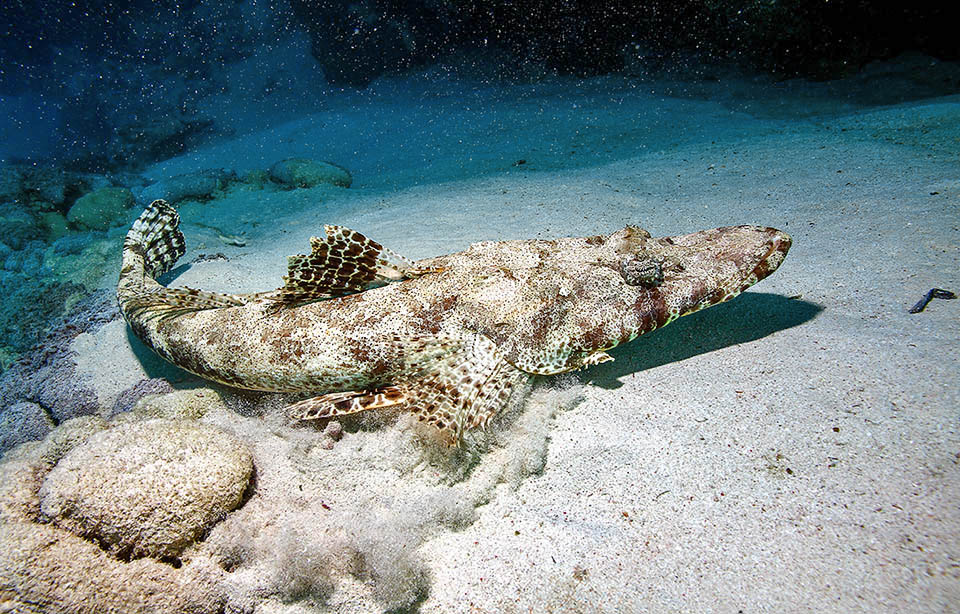
Present in west Indian Ocean, and via Red Sea nowadays also on the Mediterranean seabeds, Papilloculiceps longiceps recalls in the profile a crocodile © Jane Kempler & Andrew Goldby Freelance
After the Alligator gar (Atractosteus spatula) could not be missing in the fishermen’s fantasy also the Crocodile fish or Tentacled flathead, Papilloculiceps longiceps (Cuvier, 1829).
It does not have the grit and the size of the other, but the profile of a crocodile is present.
Taxonomically we are very distant, because it is not a living fossil like the Alligator gar but belongs to the family of the Platycephalidae, placed into the Scorpaenoidei, a suborder of ray finned fish related to the scorpionfish and inserted in the order of the Perciformes.
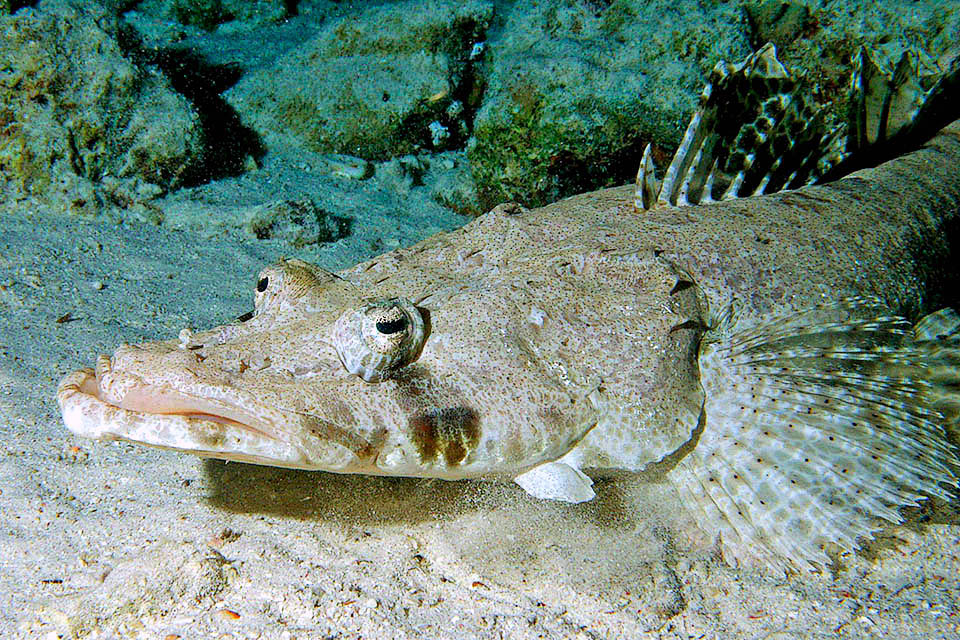
Reaches 70 cm, even if it rarely exceeds 50. The ample mouth, flat, triangular and pointed, has protruding jaw and modestly sized teeth © João Pedro Silva
The genus Papilloculiceps originates formed by the Latin “papilla”, followed by “oculus”, eye, with reference to the fact that this papilla is flattened on the edge of the eye, and finally by the Greek “ceps”, head. The specific term longiceps recalls then that this is long and sharp, like in the crocodiles.
Zoogeography
Papilloculiceps longiceps lives in western Indian Ocean, from the Red Seaand the Gulf of Aden up to South Africa and Madagascar, but from 1986, after a sighting off the Israeli coast, has become also a Lessepsian species, that has entered, like others, the Mediterranean through Suez Canal.
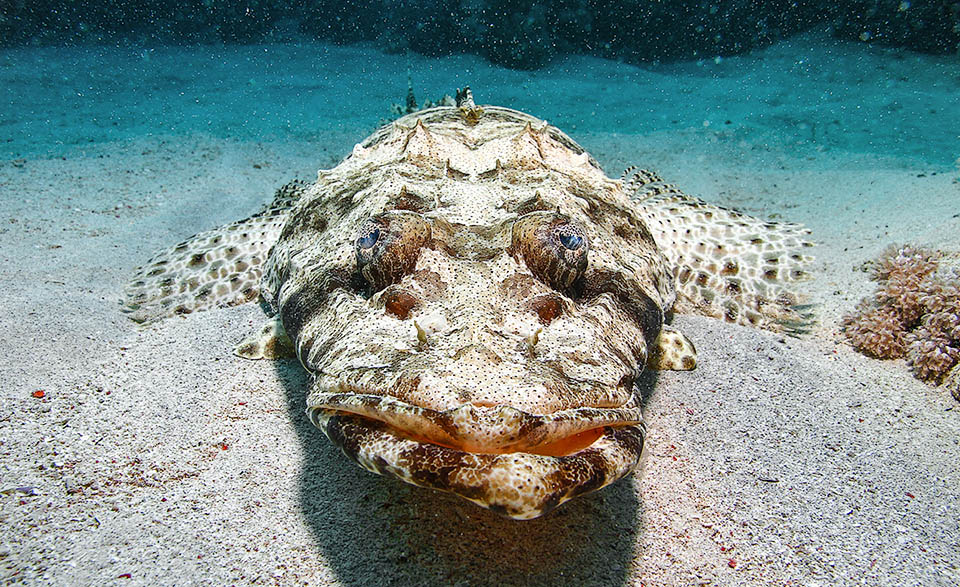
The big eyes, placed in dominant position, constantly scan the surroundings because it’s a camouflaged species hunting motionless in ambush © Jane Kempler & Andrew Goldby Freelance
Habitat-Ecology
The Tentacled flatfish is mainly found, solitary, close to the coral formations, lying on the sand or on madreporic debris between 1 and 15 m of depth, where, camouflaged on the seabed, lies in wait fishes and passing-by crustaceans, but can, exceptionally, descend up to about 40 m.
Morphophysiology
Papilloculiceps longiceps may reach the length of 70 cm, even if the normal length is of about half a metre.
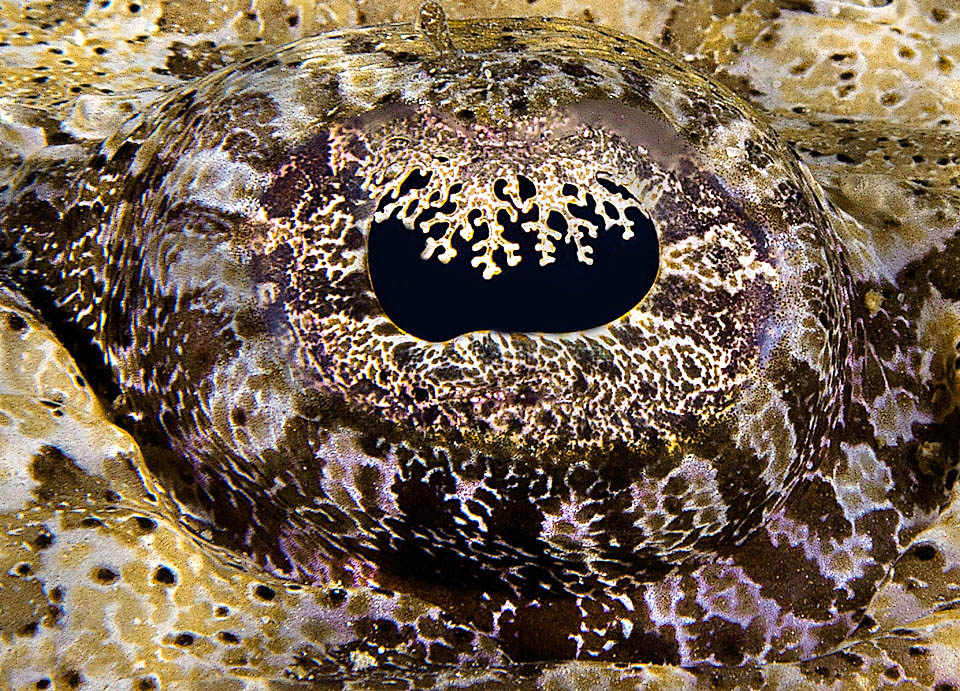
They are camouflaged in the least details by mimetic designs and even iris is hidden by a fanciful lace © Rafi Amar
The head, flat and sharp, has protruding eyes with a small tentacle, masked by patches of skin, with the iris hidden lace-like design. The mouth is ample, with a protruding jaw. The teeth, bigger on the jaw, are of modest size. We note 5 spines on the nape. The operculum and the preoperculum have the border with spiny notches.
The livery is a camouflage suit with brown and greenish spots that get paler towards the whitish belly. We note 3-4 vertical bands on the caudal fin, whilst the other fins have dark spots more or less intense. The two ample dorsal fins,united only by a small membrane, have totally 9 spiny rays and 11 soft; the pectoral ones 21-22 rays and the pelvic 1 spiny rays and 5 unarmed.
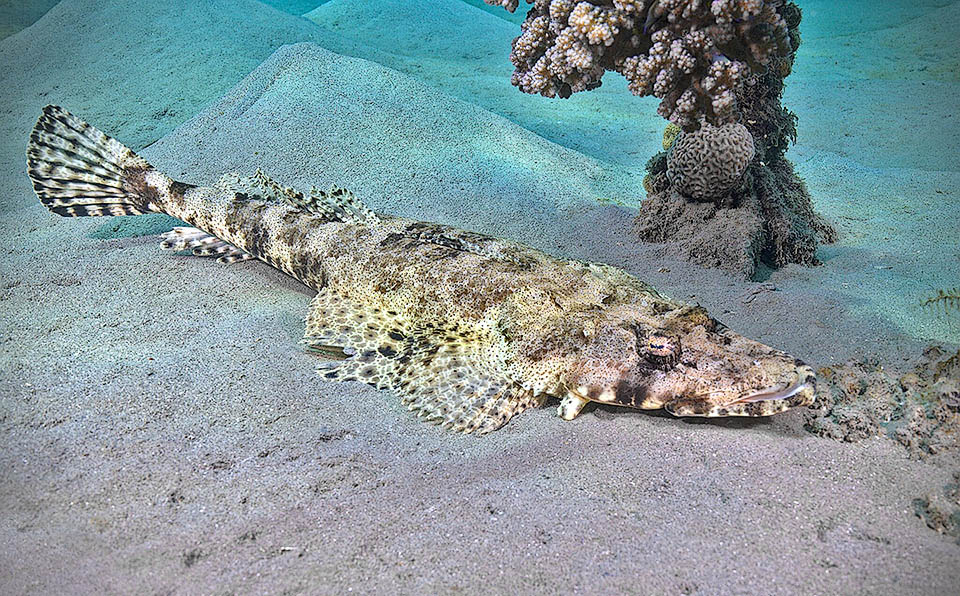
Papilloculiceps longiceps is a protandrous hermaphroditic fish, that means with males that can turn into females. Eggs and larvae are pelagic © Luis Pérez Berrocal
Ethology-Reproductive Biology
Papilloculiceps longiceps is an oviparous species, protandrous hermaphroditic, that means with males who, growing, turn into females.
Eggs and larvae are pelagic, and the resilience is mediocre, with a minimum time of 1,4-4,4 years for doubling the populations. The fishing vulnerability, moderately high, marks 48 on a scale of 100, but considering also the vast range, Papilloculiceps longiceps from 2017 appears “LC, Least Concern”, in the IUCN Red List of the endangered species.
Synonyms
Platycephalus longiceps Cuvier, 1829; Platycephalus tentaculatus Rüppell, 1838; Rogadius tentaculatus (Rüppell, 1838); Platycephalus micracanthus Sauvage, 1873; Platycephalus grandidieri Sauvage, 1873; Papilloculiceps grandidieri (Sauvage, 1873); Platycephalus papilloculus Fowler, 1935.
→ For general information about FISH please click here.
→ For general information about BONY FISH please click here
→ For general information about CARTILAGINOUS FISH please click here.
→ To appreciate the BIODIVERSITY of BONY FISH please click here.
→ To appreciate the BIODIVERSITY of CARTILAGINOUS FISH please click here.
